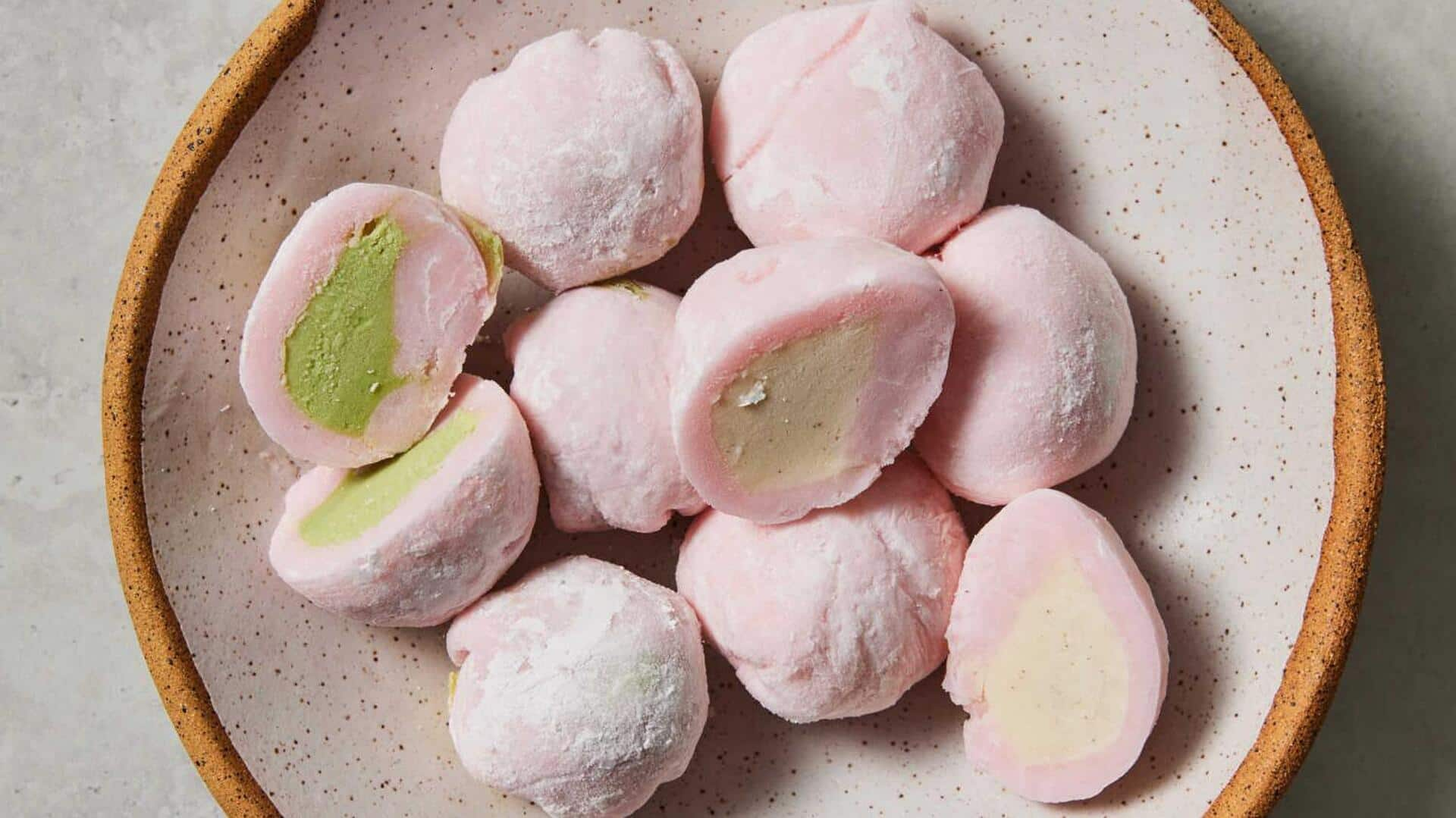
Discover mochi's journey: Origin, history, and variations
What's the story
With roots that spread across continents, the story of mochi, a traditional Japanese rice cake, is a delicious one. Traditionally prepared with glutinous rice, mochi is known for its chewy texture and cultural importance in Japan. Over the years, the delicacy has traversed the globe, accommodating different cultures and tastes. Its evolution signifies not just culinary innovation, but also the merging of traditions as it takes new forms and flavors in different regions.
Cultural significance
Traditional Japanese roots
In Japan, mochi occupies an important position in cultural rituals and celebrations. It is commonly linked to the New Year celebrations where it represents prosperity and good luck. Making mochi involves pounding steamed glutinous rice to get a smooth texture. This age-old technique is still followed today during ceremonial occasions, underscoring its persistent significance in Japanese culture.
Global expansion
Mochi's journey to the west
Mochi's introduction to western countries was a game-changer in terms of how it was prepared and consumed. Over there, mochi has been converted into different desserts such as ice cream fillings or sweet delicacies with different flavors from matcha to chocolate. This adaptation highlights how mochi has been received by different cultures without losing its unique texture that appeals to many palates around the globe.
Regional adaptations
Modern variations across Asia
Across Asia, mochi has inspired several iterations that reflect local palates and produce. In Taiwan, for example, taro-flavored mochi is a hot favorite, while in Korea, it assumes forms like chapssaltteok stuffed with sweetened red bean paste. These regional adaptations show how traditional recipes can evolve by incorporating indigenous elements without losing their original essence.
Nutritional innovations
Health trends influencing mochi production
With increasing health awareness among consumers worldwide, attempts have also been made to prepare healthier versions of mochi using substitutes like quinoa or millet instead of glutinous rice flour. This cuts down calorie count drastically but gives the same textures when cooked right. So, it appeals more towards health freaks looking for nutritious options within their diet plans today than ever seen before (historically speaking about this particular dish alone).